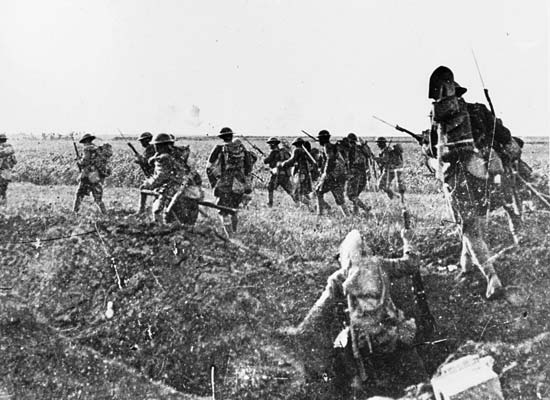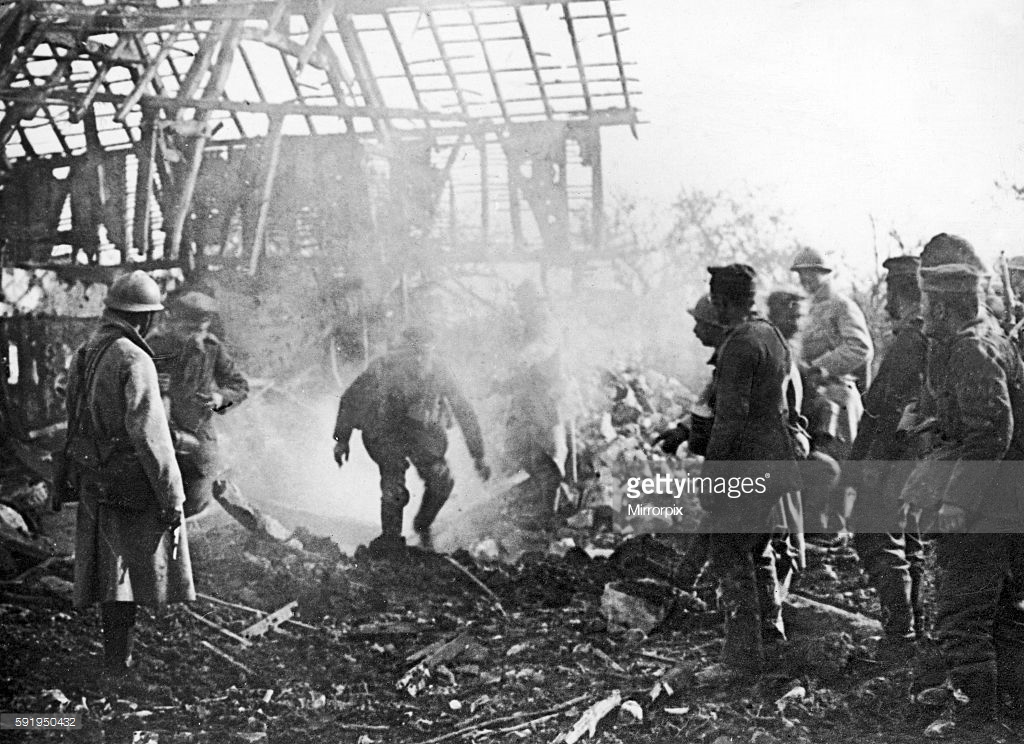Cantigny: A Test For The Americans.
AEF Reputation at Stake; A High Price to Pay
Special to The Great War Project.
(Late May) By the end of May a century ago, there are hundreds of thousands of American troops in France on the Western Front.
But they are deployed in relatively safe trenches, largely away from the serious fighting.
The French decide to “give them a chance to do something more than occupy quiet trenches,” writes historian Thomas Fleming. “They selected as a target the village of Cantigny,” situated on a ridge, some fifty-five miles northwest of Paris.

Cantigny, the first American battle.
In a smaller operation, the Germans had already “mauled” the American troops in a trench raid near Verdun, prompting British Prime Minister David Lloyd George to comment snidely that “this was the sort of thing that would happen again and again if the amateur Americans were allowed to form their own army.”
General John J. Pershing, the commander of American Expeditionary Forces in Europe, “made it clear to everyone that the AEF’s reputation was at stake.”
The French are anxious for the Americans to succeed at Cantigny, so they provide the heavy weapons: “with hundreds of long range guns, trench mortars, twelve heavy tanks, flamethrower teams, and air cover.”

Guarding against German gas attack
Reports historian Fleming, in the early morning hours of May 28th a century ago, “French and American artillery hurled hundreds of shells into Cantigny, smashing its ruins to total rubble” – there had been considerable fighting at the village earlier in the war.
“Then,” reports Fleming, “the doughboys advanced behind a rolling barrage and sheets of machine-gun fire.”
They found other American troops “dazed and demoralized by the bombardment.”
Nevertheless, the Germans withdraw.
“The next morning,” writes Fleming, “the French trumpeted this tiny victory in their newspapers, and the headlines echoed around the world.”
Then without explanation, the French heavy weapons disappear. The French redeploy their heavy guns to defend against a German attack forty miles southeast of Cantigny.
“The French needed every soldier and weapon they could find to stop it,” Fleming writes. “The Americans were left on their own to cope with German counterattacks to regain Cantigny.”.Within twenty-four hours, a third of the defending American force was dead or wounded.
The commanding American officer reports “his front line was pounded to hell and gone.” His men had to be relieved in twenty-four hours, he reported, or “he would not be responsible for what happened next.”
Visible signs of imminent breakdown were everywhere. “One American lieutenant went berserk,” Fleming reports, and started shooting at his own troops.

German soldiers surrendering to Americans at Cantigny,
But the commanding general at Cantigny was loath to withdraw his men. The whole world was watching this initial test of the Americans. “The general did not want to reveal that the American victory was turning into a semi-defeat.”
The Americans continue to fight into a third day and a third night.
Finally the battered men are relieved. “More than a thousand of their buddies were killed or wounded.”

The former French village of Cantigny.
The Americans had taken Cantigny. Some see it as a high price to pay for an unknown village of relatively little value.
But Cantigny was not about winning the war. It was about proving that Americans could handle combat on the Western Front.
